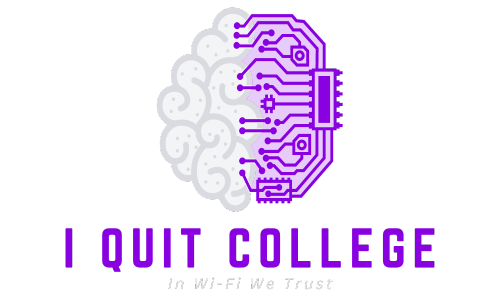Burnout is a serious issue that many individuals and businesses face. The constant pressure and demands can lead to exhaustion, cynicism, and a feeling of inefficacy. It’s important to address and overcome burnout to maintain a healthy work-life balance and ensure long-term success.
In this article, we will explore effective strategies and tips for overcoming business burnout and regaining a sense of well-being. Whether you’re an entrepreneur, a business leader, or an HR professional, these strategies can help you prevent and recover from burnout. Let’s dive in and discover how to beat business burnout!
Key Takeaways:
- Recognize the warning signs of burnout, such as exhaustion and decreased motivation.
- Take proactive steps to avoid burnout, including setting realistic limits and prioritizing self-care.
- Promote employee well-being and engagement in the workplace.
- Implement strategies to combat burnout as a business leader or entrepreneur.
- Adopt techniques for preventing burnout in the remote work environment.
Warning Signs of Business Burnout
Burnout often starts with excessive stress and pressure in the workplace. It is important to recognize the warning signs of burnout, which include physical, emotional, and mental symptoms. These can include exhaustion, cynicism, decreased motivation, and physical complaints. By being aware of these signs, individuals can take proactive steps to address and prevent burnout.
When it comes to preventing burnout in the workplace, stress management tips are key. By identifying these warning signs early on, individuals can implement strategies to promote a healthier work-life balance and maintain their well-being.
| Warning Signs of Burnout | Description |
|---|---|
| Physical exhaustion | Feeling constantly tired, lacking energy |
| Cynicism | Developing negative and cynical attitudes towards work |
| Decreased motivation | Losing interest in work and feeling apathetic |
| Physical complaints | Experiencing frequent headaches, muscle pain, or other physical ailments |
Recognizing these warning signs of burnout allows individuals to take early action in preventing burnout from escalating. It is crucial to prioritize self-care, manage stress effectively, and create a supportive work environment to maintain a healthy work-life balance.
Identifying Physical Symptoms
Physical symptoms of burnout can manifest in various ways, including:
- Constant fatigue and low energy levels
- Frequent headaches or migraines
- Trouble sleeping or insomnia
- Increased susceptibility to illness
- Unexplained muscle pain or tension
Recognizing Emotional and Mental Signs
Emotional and mental symptoms of burnout may include:
- Feelings of cynicism and detachment from work
- Lack of motivation and interest in tasks
- Difficulty concentrating or making decisions
- Increased irritability or impatience
- Reduced satisfaction and enjoyment in work
Recognizing the warning signs of business burnout is the first step towards creating a healthier and more sustainable work environment. Taking action early on can help individuals prevent burnout and maintain their well-being.
Proactive Steps for Avoiding Burnout
Preventing burnout requires adopting strategies that promote a healthy work-life balance and prioritize self-care. By implementing these proactive steps, individuals can reduce the risk of burnout and maintain their motivation and productivity in business.
Setting Realistic Work Limits
One of the key techniques to maintain a healthy work-life balance is setting realistic work limits. This involves establishing boundaries and determining the number of hours dedicated to work each day. By defining these limits, individuals can create a structured schedule that allows time for rest, relaxation, and personal activities.
Delegating Tasks
Delegating tasks is an essential skill for entrepreneurs and business professionals. By distributing workloads among team members or outsourcing certain responsibilities, individuals can reduce their workload and prevent overwhelming stress. Delegation not only frees up time but also allows the individual to focus on high-priority tasks and areas where their strengths lie.
Saying No When Necessary
Learning to say no is critical in maintaining a healthy work-life balance. It’s important to recognize personal limits and prioritize commitments accordingly. Taking on too many tasks or obligations can lead to excessive stress and burnout. Saying no when necessary allows individuals to protect their time and energy, focusing on tasks that align with their goals and values.
Letting Go of Perfectionism
Perfectionism can be a significant contributor to burnout. Striving for perfection in every aspect of business can create excessive pressure and unrealistic expectations. It’s essential to recognize that perfection is not always attainable and that mistakes and failures are part of the learning and growth process. Letting go of perfectionism allows individuals to alleviate unnecessary stress and focus on progress rather than unattainable ideals.
Physical and Mental Well-being
Building resilience in business necessitates prioritizing physical and mental well-being. A healthy lifestyle is crucial for combating stress and maintaining overall wellness.
Self-care should never be seen as a luxury, but as a non-negotiable part of your routine.
Maintaining a healthy diet, engaging in regular exercise, and getting enough sleep are crucial components of physical well-being. These practices provide energy, enhance focus, and strengthen the body’s ability to manage stress. Additionally, taking breaks throughout the workday and practicing relaxation techniques, such as deep breathing or mindfulness, can help individuals recharge and maintain mental clarity.
By implementing these proactive steps and prioritizing work-life balance and self-care, individuals can reduce the risk of burnout and cultivate resilience in their business endeavors.
Promoting Employee Well-being and Engagement
Preventing burnout is not solely the responsibility of individuals; organizations also play a crucial role in creating a supportive work environment. By valuing mental health in entrepreneurship and prioritizing employee well-being, employers can promote a healthy work-life balance and enhance engagement.
One key aspect of promoting employee well-being is fostering open communication. Encouraging employees to express their thoughts, concerns, and ideas creates a sense of psychological safety and ensures that their voices are heard.
In addition to communication, organizations should provide support to employees by offering resources for mental health, such as workshops or counseling services. These resources can help individuals navigate challenges and seek help when needed, promoting a culture of self-care and resilience.
Setting realistic expectations is another crucial factor in preventing burnout. Unrealistic workloads and deadlines can overwhelm employees, leading to stress and eventually burnout. Employers should strive to establish achievable goals and promote a healthy work-life balance to ensure that employees can maintain their mental well-being.
Creating a Positive Work Atmosphere
A positive work atmosphere is essential for preventing burnout and increasing employee engagement. By cultivating an environment that supports mental health in entrepreneurship, organizations can create a sense of belonging, purpose, and fulfillment among their employees.
“A healthy work culture recognizes and values the well-being of its employees, creating a supportive environment that encourages growth and development.”
Furthermore, organizations can promote a healthy work-life balance by implementing flexible work arrangements, such as remote work options or flexible hours. This allows employees to better manage their personal and professional responsibilities, reducing stress levels and promoting overall well-being.
Benefits of Promoting Employee Well-being
| Benefits | Description |
|---|---|
| Increased productivity | Employees who feel supported and valued are more likely to be motivated and productive. |
| Reduced turnover | A positive work atmosphere leads to higher employee retention rates, saving time and resources in recruiting and training. |
| Enhanced creativity | When employees are not overwhelmed by burnout, they have the mental space to think creatively and generate innovative ideas. |
| Improved employee engagement | A supportive work environment fosters engagement and a sense of commitment to the organization’s mission. |
Promoting employee well-being is not only beneficial for individuals but also for the overall success and sustainability of the organization. By prioritizing mental health in entrepreneurship and creating a positive work atmosphere, employers can prevent burnout, increase employee satisfaction, and foster a thriving and productive workforce.
Strategies for Business Leaders to Combat Burnout
Burnout can affect business leaders as well, and it is essential for them to prioritize their well-being and adopt strategies to overcome burnout. By maintaining a healthy work-life balance and implementing effective workaholic recovery strategies, business leaders can not only maintain their motivation but also lead their organizations to success.
Changing Attitudes and Reframing Perceptions
One of the key strategies for business leaders to combat burnout is to change their attitudes and reframe their perceptions of work. It’s important to recognize that working excessively and neglecting personal well-being is not a sustainable approach. By shifting the mindset towards valuing self-care and work-life balance, leaders can create a healthier work environment for themselves and their teams.
Practicing Self-Care
Self-care is crucial for maintaining motivation in business. Business leaders should prioritize activities that bring them joy and relaxation, whether it’s pursuing hobbies, exercising regularly, or spending quality time with loved ones. Taking breaks and setting boundaries is also essential to prevent burnout and maintain long-term productivity.
“Self-care is not selfish; it is necessary for sustainable success.” – Richard Branson
Focusing on Limiting Demands and Setting Realistic Expectations
Business leaders often have high expectations for themselves and their teams, which can contribute to burnout. It is important for leaders to assess the demands they place on themselves and others and ensure they are realistic and manageable. Delegating tasks, prioritizing projects, and setting achievable goals can help alleviate stress and maintain motivation.
Creating a Supportive Work Culture
Business leaders should strive to create a supportive work culture that values employee well-being and work-life balance. By fostering open communication, encouraging collaboration, and providing resources for stress management, leaders can help prevent burnout in their organizations. Recognizing and appreciating employees’ efforts and achievements is also crucial for maintaining motivation and engagement.
To combat burnout, business leaders must remember that their well-being is just as important as the success of their organization. By implementing these strategies and prioritizing self-care and work-life balance, leaders can maintain their motivation and effectively lead their organizations towards sustainable success.
Strategies for Preventing Burnout in Remote Work
The rise of remote work has brought unique challenges in maintaining work-life balance and managing stress. Preventing burnout is crucial for remote workers to maintain their well-being and productivity. Here are some effective strategies to help remote workers prevent burnout:
1. Set Clear Boundaries
To maintain work-life balance, it’s important for remote workers to establish clear boundaries between work and personal life. Set specific working hours and avoid extending work into personal time. Communicate these boundaries to colleagues and managers to ensure everyone understands your availability.
2. Create a Designated Workspace
Having a dedicated workspace can help remote workers create a clear separation between work and home life. Set up a comfortable and ergonomic workspace that allows you to focus and be productive. Avoid working from your bed or couch, as it can blur the lines between work and relaxation.
3. Maintain Regular Communication
Remote work can sometimes feel isolating, so it’s important to stay connected with colleagues and managers. Schedule regular check-ins and meetings to stay updated on projects and foster collaboration. This also helps to reduce feelings of isolation and maintain a sense of teamwork.
4. Practice Self-Care
Make self-care a priority in your remote work routine. Take breaks throughout the day to stretch, relax, or engage in activities you enjoy. Incorporate regular exercise into your schedule to keep your body and mind healthy. Prioritize adequate sleep and nutrition to support your overall well-being.
5. Implement Stress Management Techniques
Stress management is crucial to prevent burnout. Incorporate stress-reducing techniques into your daily routine, such as meditation, deep breathing exercises, or mindfulness practices. Identify what helps you relax and recharge, and make time for these activities regularly.
“Taking care of yourself is part of taking care of your work.”
By following these strategies, remote workers can effectively prevent burnout and maintain a healthy work-life balance. Remember, it’s essential to prioritize self-care and create boundaries to ensure long-term well-being in a remote work environment.
Programs and Initiatives for HR Professionals
Human resources professionals play a vital role in maintaining motivation in business and promoting mental health in entrepreneurship. They have the power to implement programs and initiatives that foster employee well-being, work-life balance, and positive mental health. By prioritizing these factors, HR professionals contribute to preventing burnout and creating a supportive work environment.
Promoting Employee Well-being
HR professionals can organize various initiatives that prioritize employee well-being. This includes offering support services such as counseling and therapy sessions, providing access to wellness programs and resources, and implementing employee assistance programs. These initiatives help employees manage stress, maintain their mental health, and navigate the challenges of entrepreneurship.
Promoting Work-Life Balance
HR professionals can emphasize the importance of work-life balance by promoting flexible work arrangements that allow employees to maintain a healthy equilibrium between their professional and personal lives. This can include options like remote work, flexible schedules, and extended time off. By supporting work-life balance, HR professionals contribute to reducing the risk of burnout and enhancing overall job satisfaction.
Resources for Stress Management and Self-Care
Providing resources and tools for stress management and self-care is crucial for maintaining motivation in business and supporting mental health. HR professionals can organize workshops and training sessions on stress reduction techniques, mindfulness practices, and effective self-care strategies. Additionally, they can curate a collection of online resources, articles, and books related to mental health and personal growth, ensuring employees have access to valuable information.
“Creating a positive work environment starts with prioritizing employee well-being and mental health. HR professionals are instrumental in implementing programs and initiatives that foster motivation and prevent burnout.”
Employee Recognition and Rewards
Recognizing and rewarding employees for their hard work and accomplishments is essential for maintaining motivation in business. HR professionals can design recognition programs that celebrate individual and team successes, encouraging a positive work culture. This can include awards, incentives, and public acknowledgments. By recognizing and rewarding employees, HR professionals inspire motivation and reinforce a sense of value and appreciation within the organization.
Training and Development Opportunities
HR professionals should prioritize training and development opportunities that promote personal and professional growth. By offering workshops, seminars, and online courses, they equip employees with the necessary skills and knowledge to thrive in their roles. Investing in ongoing development shows employees that their growth is valued, boosting motivation and engagement in the workplace.
Building a Supportive Network
HR professionals can establish formal and informal networking opportunities for employees to connect, share experiences, and seek support. This can include mentorship programs, social events, and online forums. Building a supportive network fosters a sense of community and belonging, which is crucial for maintaining mental health and motivation in business.
By implementing these programs and initiatives, HR professionals play a pivotal role in maintaining motivation in business and prioritizing mental health in entrepreneurship. Their efforts contribute to preventing burnout, creating a positive work environment, and supporting employees’ overall well-being.
Conclusion
Business burnout is a prevalent issue that can have significant consequences for individuals and organizations. To effectively recover from burnout and maintain a healthy work-life balance, it is important to implement effective strategies. Prioritizing self-care is essential in nurturing physical and mental well-being.
Seeking support from friends, family, and professional networks can provide valuable guidance and resources. In addition, creating a supportive work environment is crucial. Employers and organizations should recognize the importance of a healthy work-life balance and promote initiatives that prioritize employee well-being. By doing so, they can contribute to preventing burnout and fostering a positive work atmosphere.
Remember that burnout prevention is an ongoing process that requires constant attention and effort. Regularly assessing and recalibrating work limits, setting realistic expectations, and practicing stress management techniques are key strategies for maintaining motivation and productivity. By adopting these effective burnout recovery strategies and maintaining a healthy work-life balance, individuals can overcome burnout and thrive in their professional endeavors.
FAQ
What are the warning signs of business burnout?
The warning signs of business burnout can include physical symptoms like exhaustion, as well as emotional and mental symptoms such as cynicism and decreased motivation.
What proactive steps can I take to avoid burnout?
To avoid burnout, it’s important to prioritize self-care and maintain a healthy work-life balance. This can include setting realistic work limits, delegating tasks, and practicing stress management techniques.
How can employers promote employee well-being and engagement?
Employers can promote employee well-being and engagement by creating a supportive work environment, recognizing employees’ contributions, and offering resources for stress management and self-care.
What strategies can business leaders adopt to combat burnout?
Business leaders can combat burnout by prioritizing their own well-being, setting realistic expectations, and practicing self-care. It’s also important for leaders to limit demands and delegate effectively.
How can I prevent burnout when working remotely?
When working remotely, it’s crucial to set clear boundaries between work and personal life, create a designated workspace, and maintain regular communication with colleagues and managers. Prioritizing self-care and practicing stress management techniques are also important.
What initiatives can HR professionals implement to prevent burnout in the workplace?
HR professionals can implement initiatives that promote employee well-being, work-life balance, and mental health. This can include offering support services, promoting flexible work arrangements, and providing resources for stress management and self-care.
How can I effectively overcome burnout and maintain a healthy work-life balance?
To effectively overcome burnout and maintain a healthy work-life balance, it’s important to prioritize self-care, seek support when needed, and create a supportive work environment. Remember, burnout prevention is an ongoing process that requires constant attention and effort.






